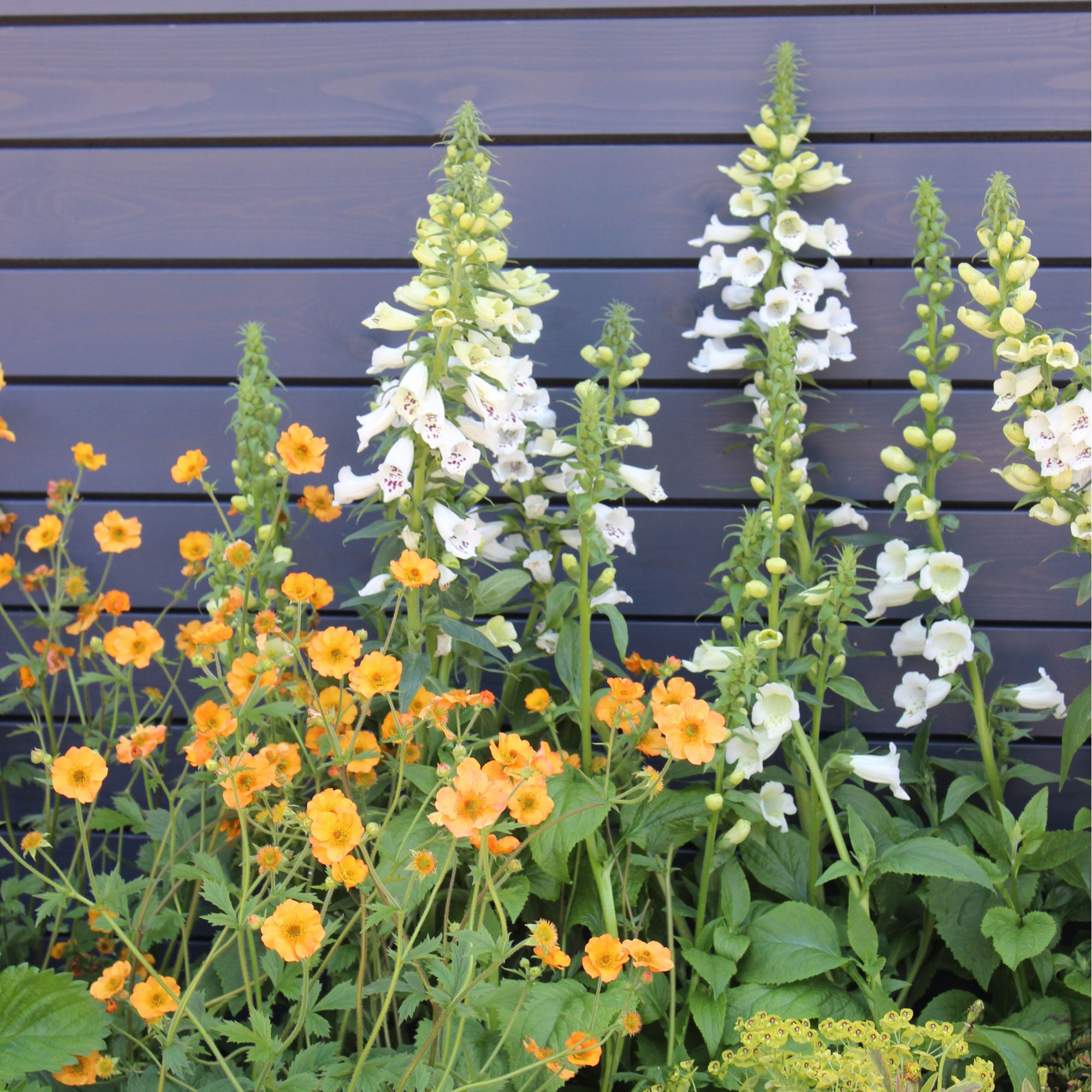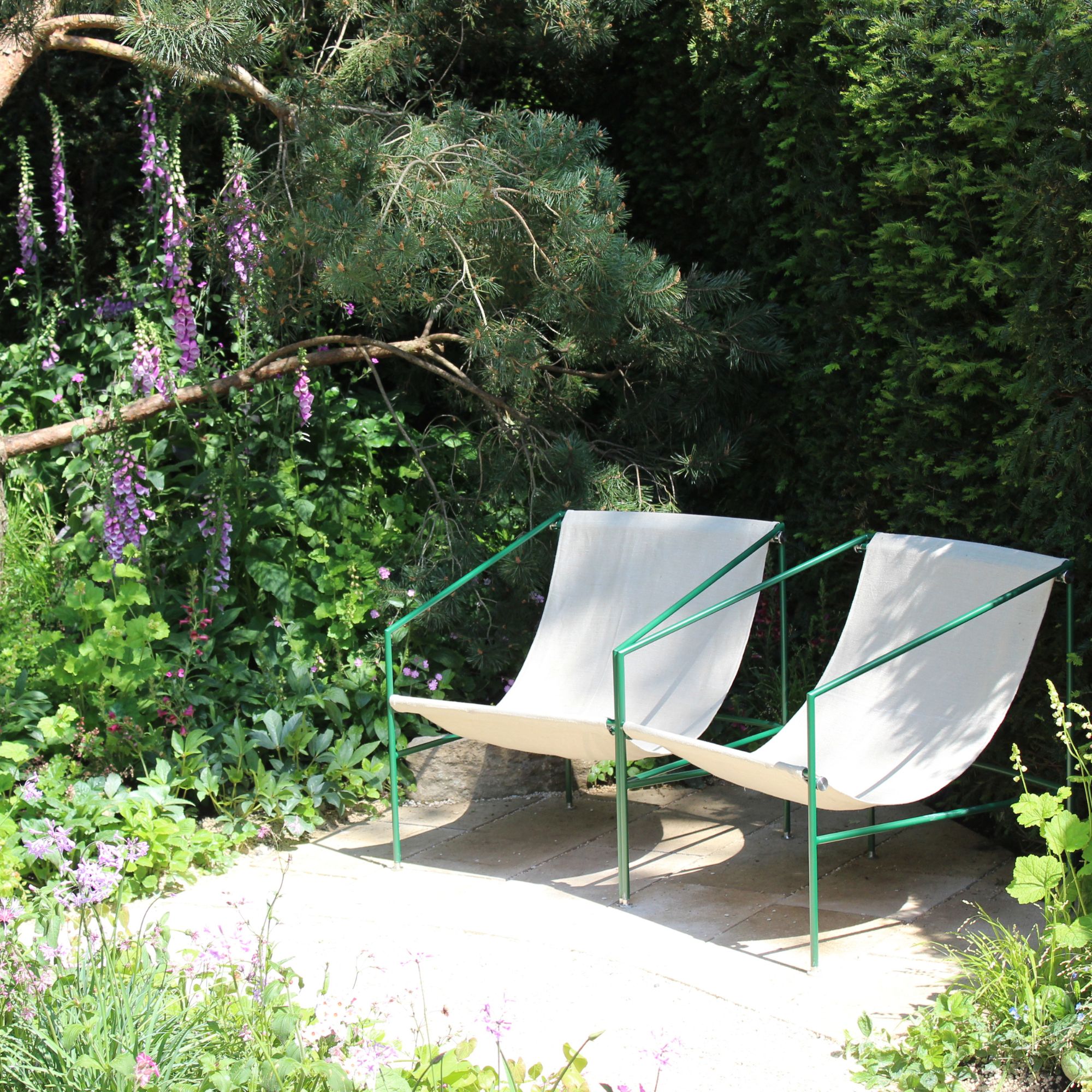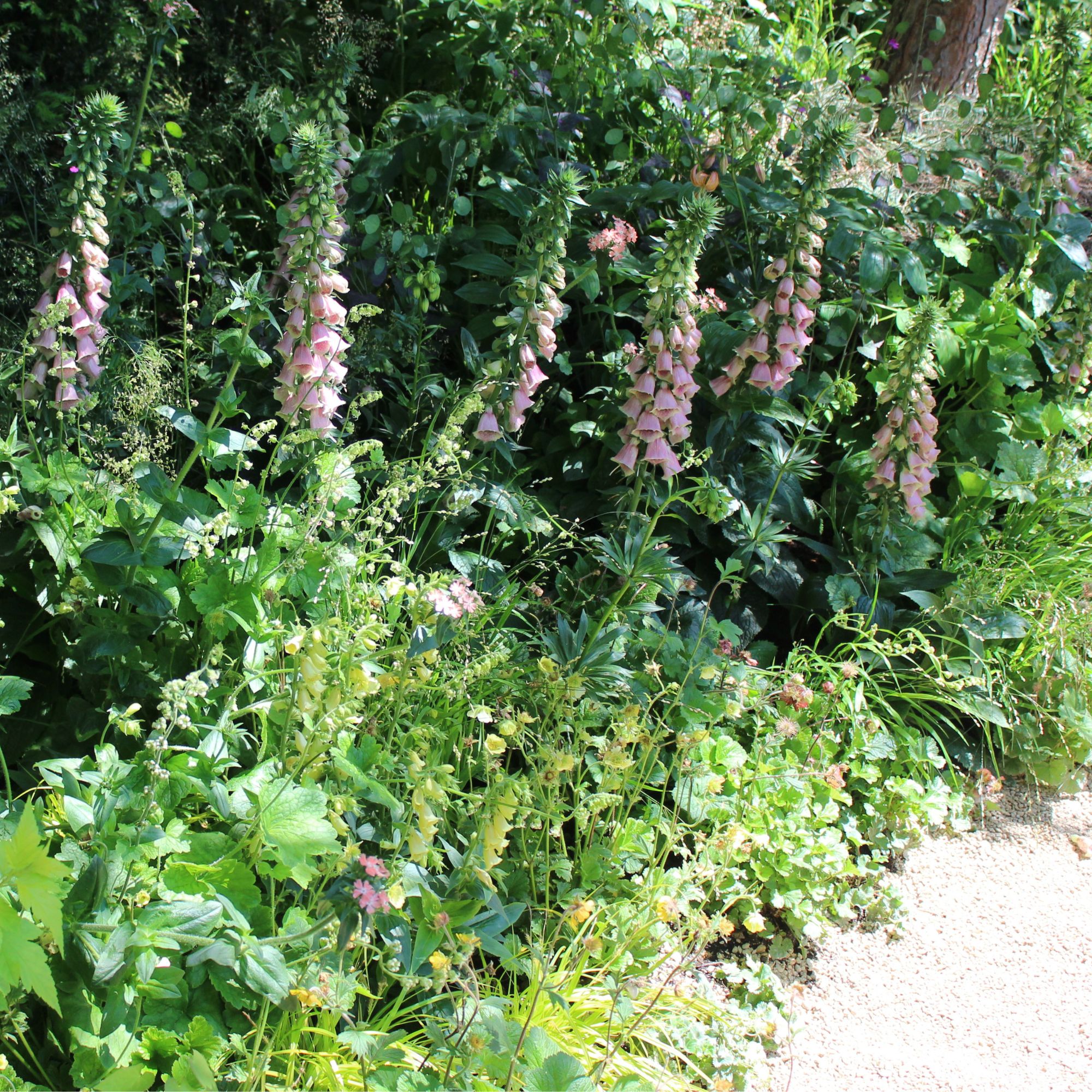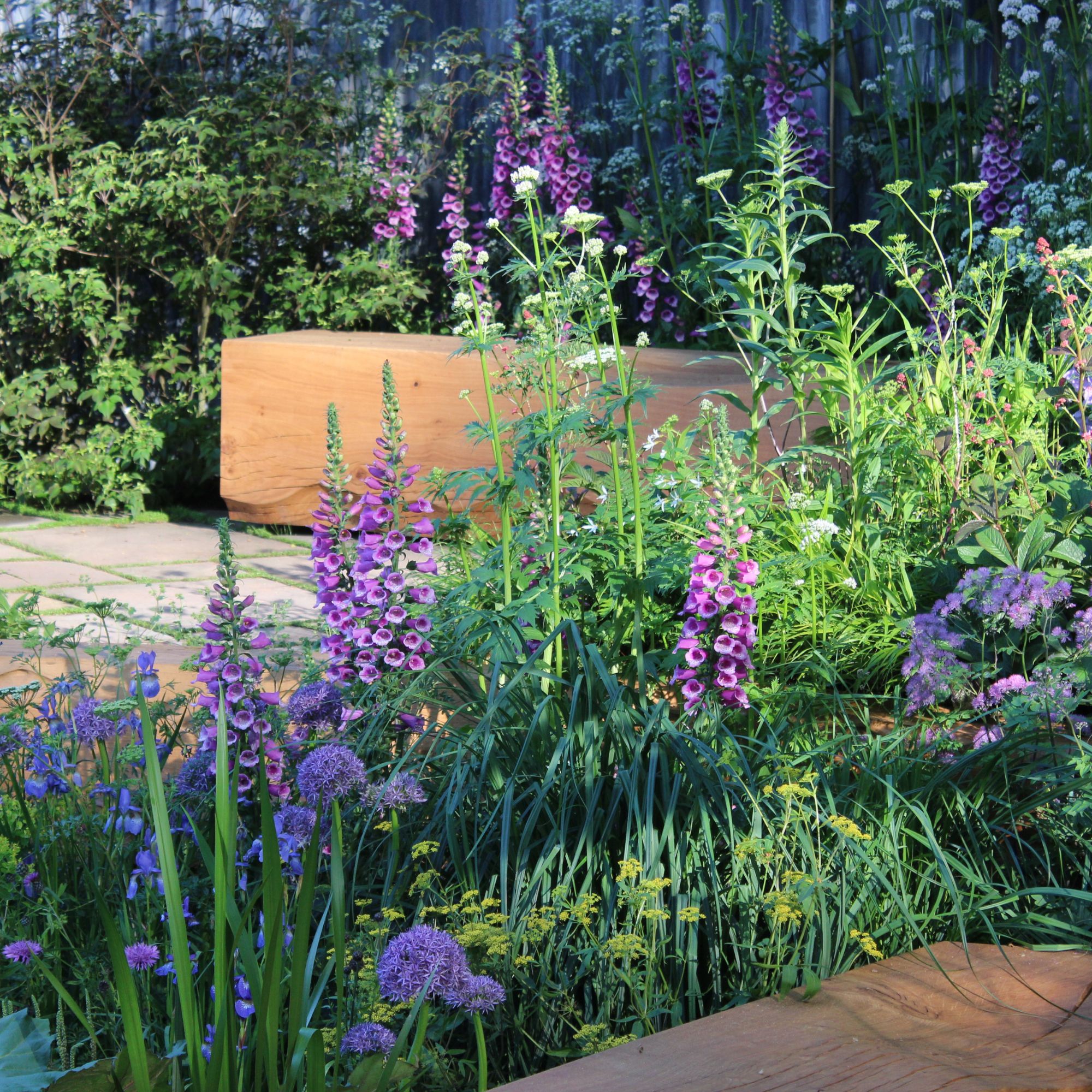
This year, the RHS Chelsea Flower Show brought talented gardeners, innovative inventions, and new garden trends to our attention. But the surprising star of the show across the pavilion and display gardens was the foxglove - and this is how you can grow foxgloves in your own garden.
Yes, foxgloves were everywhere this year, stealing the hearts of the RHS Chelsea Flower Show visitors - and even the heart of Ideal Home’s Editor-in-Chief, Heather Young. After seeing these stunning displays in the flesh, she’s made it her mission to add foxgloves to her own garden this year, and it’s not hard to understand why.
If you want to join her in planting some of the best bedding plants for shade in your garden, this is everything you need to know about growing foxgloves - no matter whether you want to grow from seed or plug plants.
How to grow foxgloves
‘Foxgloves are one of the most well-loved shade-loving plants. Not only loved by us, but bees will frequently visit the nectar-rich flowers,’ explains Morris Hankinson, director of Hopes Grove Nurseries.
And if you want to bring your own cottage garden ideas to life, it’s fair to say that you’re spoiled for choice, as you have two options to choose from. So, how will you grow foxgloves?
How to grow foxgloves from seed

If you love growing from seed and watching the fruits of your labour sprout in front of your very eyes, you’ll be happy to know that growing foxgloves from seed is extremely easy - and very effective. You just need to follow the steps below:
What you'll need
Step-by-step
1. Acquire the seeds
If you didn’t already know, many foxgloves are biennial, meaning they’ll flower one year and seed the next. As a result, anyone who plants foxgloves in their gardens will have an unlimited supply of stunning blooms at their disposal if they choose to make the most of these seeds.
This technically means that you don’t have to do anything at all to grow foxgloves in your garden, and can instead opt for a hands-off approach.
Morris explains, ‘One of the easiest ways to grow from seed is to let your existing foxgloves go to seed in the garden, and the seeds will produce more plants around the area the foxgloves are growing. You will find the following spring that some young plants will start growing, which can be gently removed and planted where you want them to grow.’
However, Morris also advises that you could also ‘collect the seeds from existing plants’ and then sow them - similarly to how you would if you bought the foxglove seeds from the garden centre.
And if you don’t already have foxgloves in your garden (and you can’t grab some from a friendly neighbour), then acquiring the seeds online or in-store is your best bet.
2. Choose the right time
To successfully grow foxgloves from seed, you need to know when to plant foxglove seeds. John Clifford, garden expert from Gardenstone, explains, ‘If growing from seed, you can either start them inside in late winter/early spring or sow them directly into the ground in late spring/early summer.’
While you can choose either option, Morris would advise planting them under cover first to ensure the best chances of success. And if you don’t have a greenhouse in your small garden, a cold frame will also work just as well. We’re particularly fond of this Spear & Jackson Cold Frame from Amazon.

3. Sow your seeds
When you have your foxglove seeds, you can then start sowing. John says, ‘Use seed trays with well-draining soil and plant the seeds by scattering them on the surface of the soil. Don’t cover them.’
As you wait for them to germinate, ensure you keep the soil moist and maintain a watering schedule to give them their best chance of survival.
4. Transplant the seedlings
Growing anything from seed takes a little bit of time and patience, but after a few weeks, you should see signs of foxglove growth. And soon enough, the seedlings should start poking through.
John explains, ‘Transplant the seedlings once the plants have a couple of leaves on them, and there's no more chance of frost outdoors.’ Then, ‘plant out into a partially shaded spot with well-draining soil.’
As they continue to grow, you can then wait for the stunning blooms to appear.
How to grow foxgloves from plug plants

If you prefer growing from plug plants over growing from seed, you can also grow foxgloves from plug plants. In fact, this is generally considered to be the best option for those adding foxgloves to their garden for the first time. To do this, check out the steps below:
What you’ll need
Step-by-step
1. Choose the biggest plugs
You can’t grow foxgloves from plug plants without having the plugs themselves. Thankfully, these are easy to come by.
However, Morris warns, ‘Plug plants do come in different sizes and can often be very small.’ Because of this, it’s always a good idea to buy these plugs in person so that you can choose the biggest of the bunch.
Be careful when handling these plants, though. John explains, ‘Always remember foxgloves are toxic, so you'll need to ensure to wash your hands after touching and working with them.’
We’d also suggest wearing gardening gloves at all times.
2. Re-pot the plugs
Although you can simply plant foxglove plugs directly into the ground, Morris suggests an alternative approach. And while it will take a bit longer to see the physical rewards of your foxglove planting, it’s generally considered to be the most effective way to grow foxgloves.
He says, ‘On arrival pot these into small pots, increasing in size as the plants grow. Keep these watered and in a sheltered position until the following spring. If you plant in autumn you may find these young plants won’t make it through the winter so it is best to wait.’
3. Be patient
By the following spring, you can either choose to keep the foxgloves in pots to add to your container garden, or you could plant them out into your garden borders. Either way, you need to be patient and not expect immediate results.
Morris explains, ‘Foxgloves will flower the year after they have been planted as long as they have established well and the foliage has grown strong.’
Then, all you need to do is care for your foxgloves properly and give them everything they need. This includes humus-rich, well-draining and slightly acidic soil.

FAQs
Do foxgloves come back every year?
As most foxgloves are biennials, they flower one year and then seed the next. They also freely self-seed, which means it’s not uncommon for more plants to pop up around the original plant.
However, the original plant won’t flower year after year as it only has a two-year life cycle. This means that you can either leave it to its own devices and self-seed, or you could collect the seeds and re-plant them.
Alternatively, you could plant more foxgloves by planting foxglove plugs or opt for perennial foxgloves that will come back year after year. These aren’t as common, though.
Where do foxgloves grow best?
Foxgloves are extremely shade-tolerant, which means that they’re perfect for north-facing gardens. In an ideal world, however, they grow best in dappled or light shade.
Alongside this, they also grow best in rich, free-draining soil that’s slightly acidic. They benefit from a lot of organic matter, which is why adding fresh compost to your foxgloves wouldn’t go amiss.
Now you know how to grow foxgloves, it’s time to get growing!






